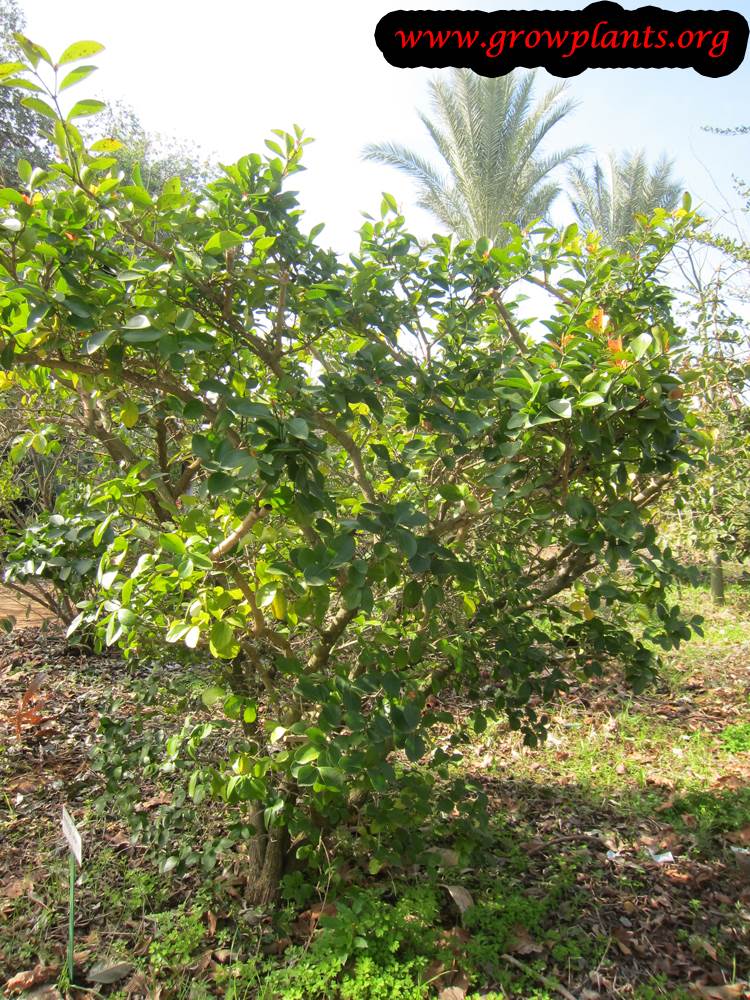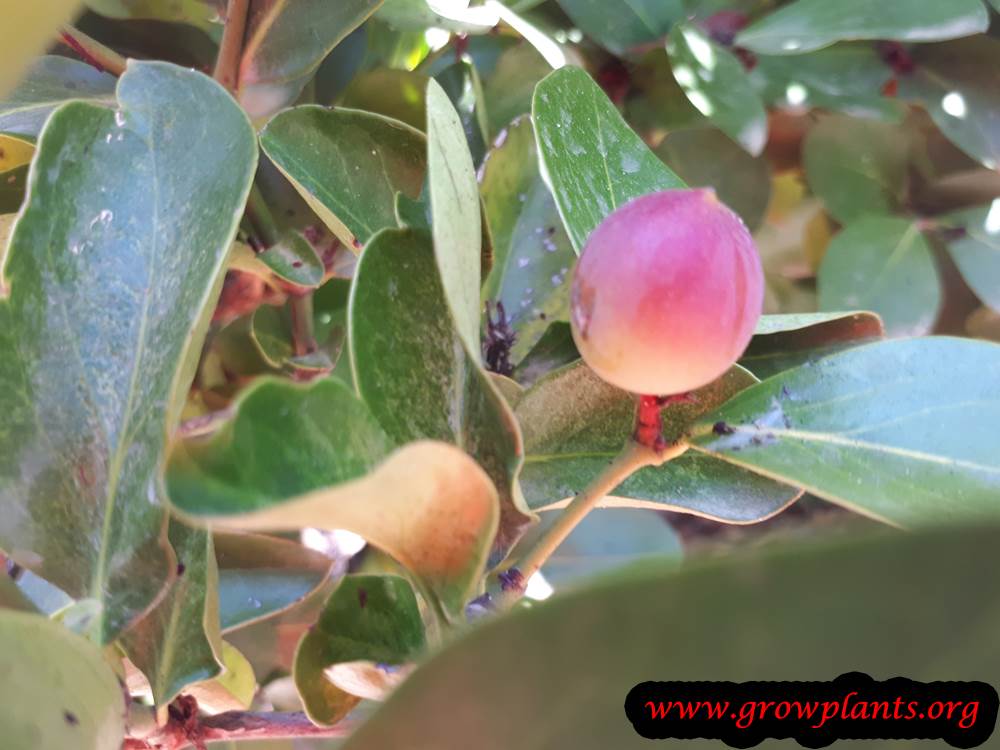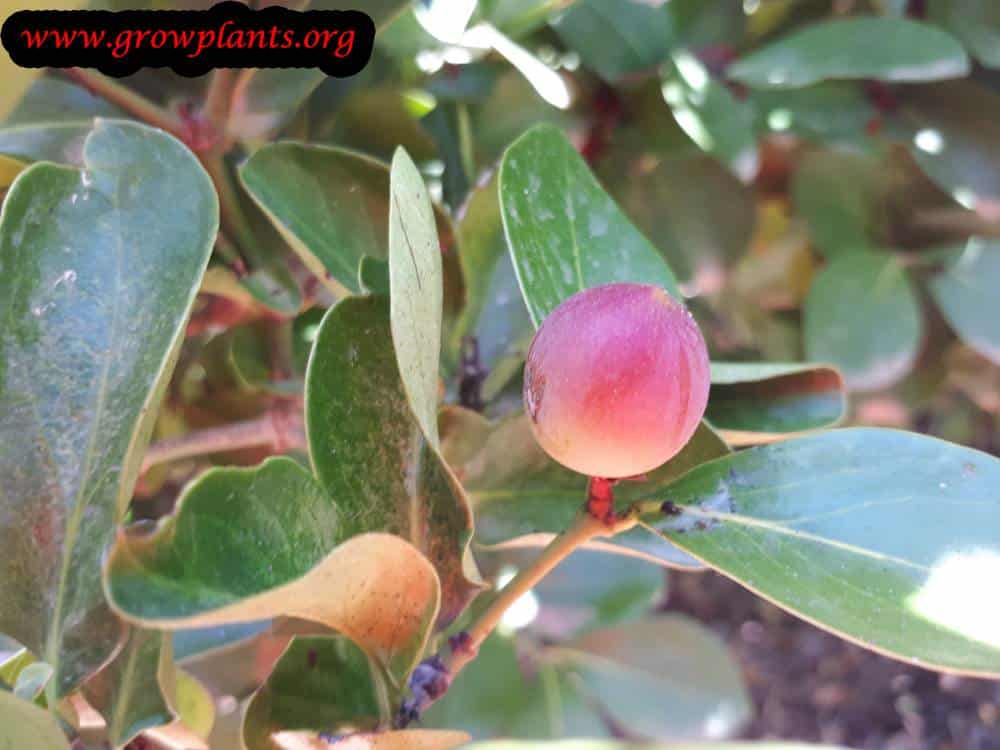
Karonda plant grow and care – shrub of the genus Carissa also known as Carissa carandas, Karonda plant perennial evergreen plant used for the edible fruits also used as ornamental plant as hedge plant and possible in the right care to grow as bonsai and it can be drought tolerant, can grow in tropic mediterranean or subtropical climate and growing in hardiness zone 10+.
Flower color white with five petals grow in cluster 2-6+ flowers.
Karonda fruit
Fruit edible color glossy pink, red to purple the shape is oval berry, better to eat the fruits when fully ripen, inside the fruit color is red to purple with white material like milk,
Karonda plant for sale – Seeds or Plants to Buy
No products found.
How to grow karonda plant Karonda plant – growing and care:
More -3C, prefer well drained soil
What is the best way to start growing:
Plant / Seed / Vegetative Reproduction
Is it necessary to graft or use vegetative reproduction?
No, but easy to start by cutting and good for plantation, seeds takes more time to get fruits and can’t ensure the fruits quality
Difficulties or problems when growing:
Spines
Planting season:
Arid summer in spring in tropical all year
Pests and diseases:
Aphids
Pruning season:
All year not in the tropical better in the winter
How to prune:
More for design, possible to design as hedge plant or even as small tree
Size of the plant:
3-5 m, 10-15 feet
Growth speed in Carissa carandas:
Medium growing
Carissa carandas Irrigation water management requirement:
Small amount of water / Average amount of water, can be even drought tolerant
Light conditions in optimal condition for growing:
Full Sun / Half Shade
It is possible to grow Carissa carandas indoor?
No
Growing is also possible in a planter /flowerpot / containers:
Yes, start with the desirable size of container or even better pot that bigger 20-30% from the root ball that change when the root ball grow until arrive to the desirable size of container, use potting soil, care instruction: mostly to prune and design once a year
Blooming information
Bloom season:
Spring / Summer / Autumn
General information about the Carissa carandas flower:
White flower with five petals grow in cluster
Pollination is done by:
Bees
Edible Fruits
Fruit harvest season:
Summer / Autumn (possible all the year in tropical climate
Pests or diseases in fruit:
Birds
What can be done with big quantities of Karonda fruits?
Eat raw, pickles, jams
Work requirements on the Carissa carandas fruit:
Nothing special
How long does it take to bear fruit?
2-3 year
Carissa carandas seeds germination
Sowing requirement:
Moist soil, warm weather, well-drained soil
Saving and care for seeds until sowing:
Dry and dark in room temperature
Sowing season:
Spring / Summer, possible all the year from hardiness zone 11+ but will establish better in the spring
Planting spacing:
30*40cm (12*16 inches) but need after to transplant, better direct 3*4m (10-13ft) or just start with separate pots
Depth of Sowing:
0.5-1cm (0.25.0.5inches)
Conditions for seeds germinate:
Moist soil, sunny location,
Watering requires for Seeds:
Average amount of water do not over water and don’t let it dry
Germination time:
3-5 weeks
Condition of seedling:
Sunny location, water regular until establish
Scientific name:
Carissa carandas
Categories
| Blooming Seasons |
|
|---|---|
| Edible Parts |
|
| Culinary uses |
|
| Flower colors |
|
| Climate |
|
| Harvest Season |
|
| Ornamental parts |
|
| Plant growing speed |
|
| Plant life-form |
|
| Plant Uses |
|
| Planting Season |
|
| Plants sun exposure |
|
| Watering plants |
|
| Hardiness zone |
|




